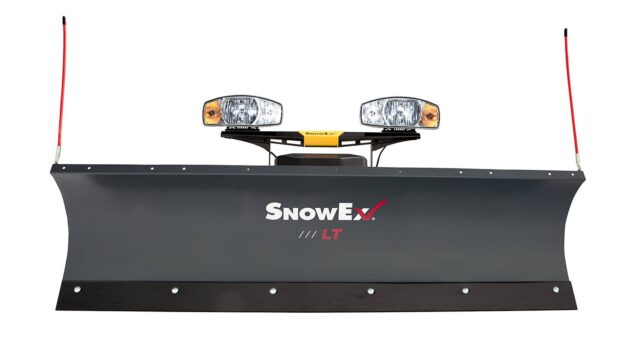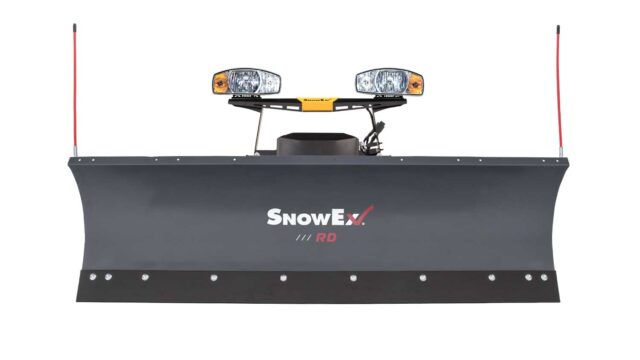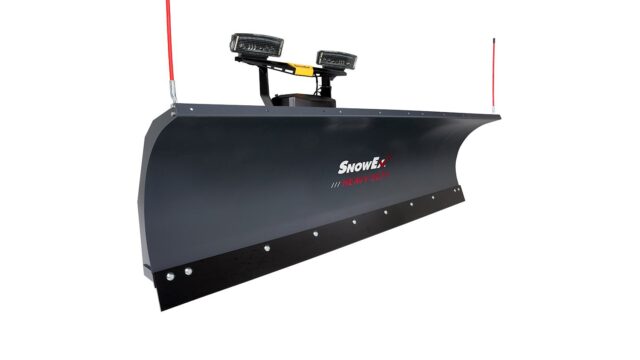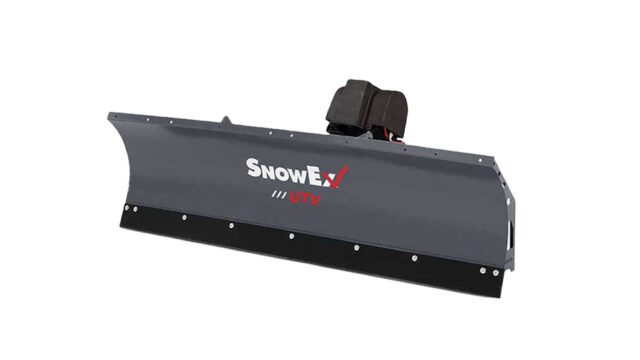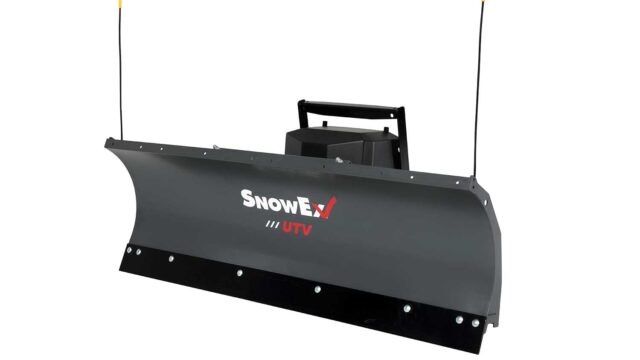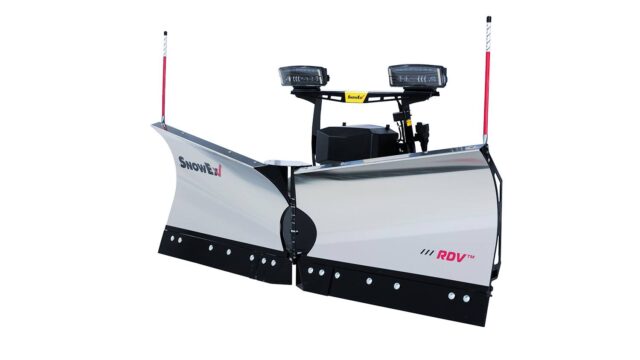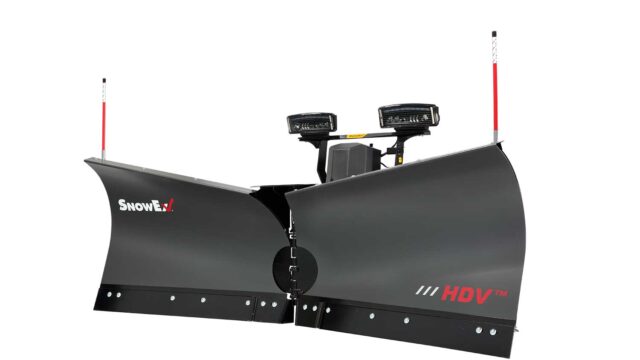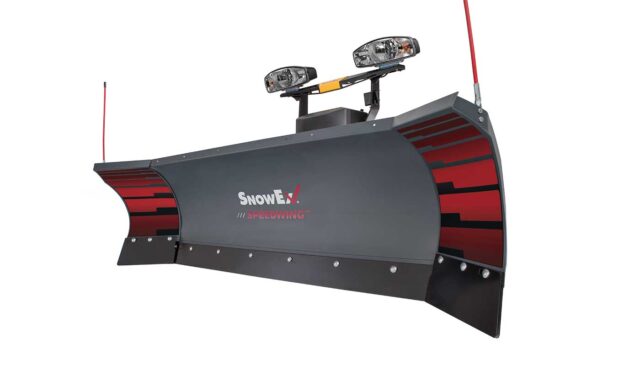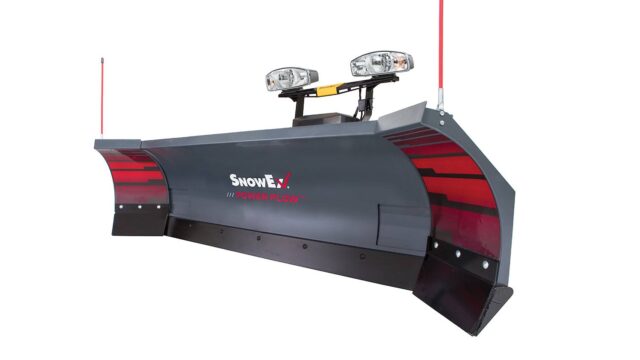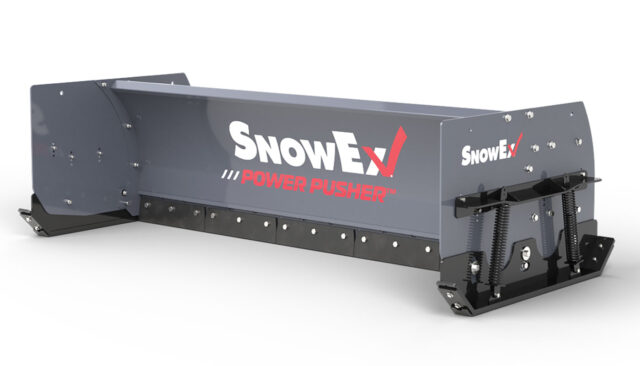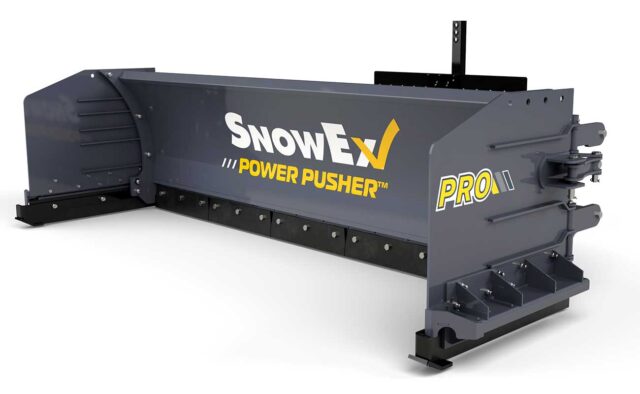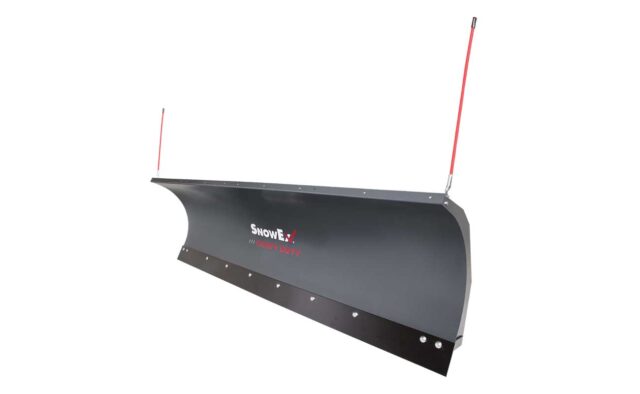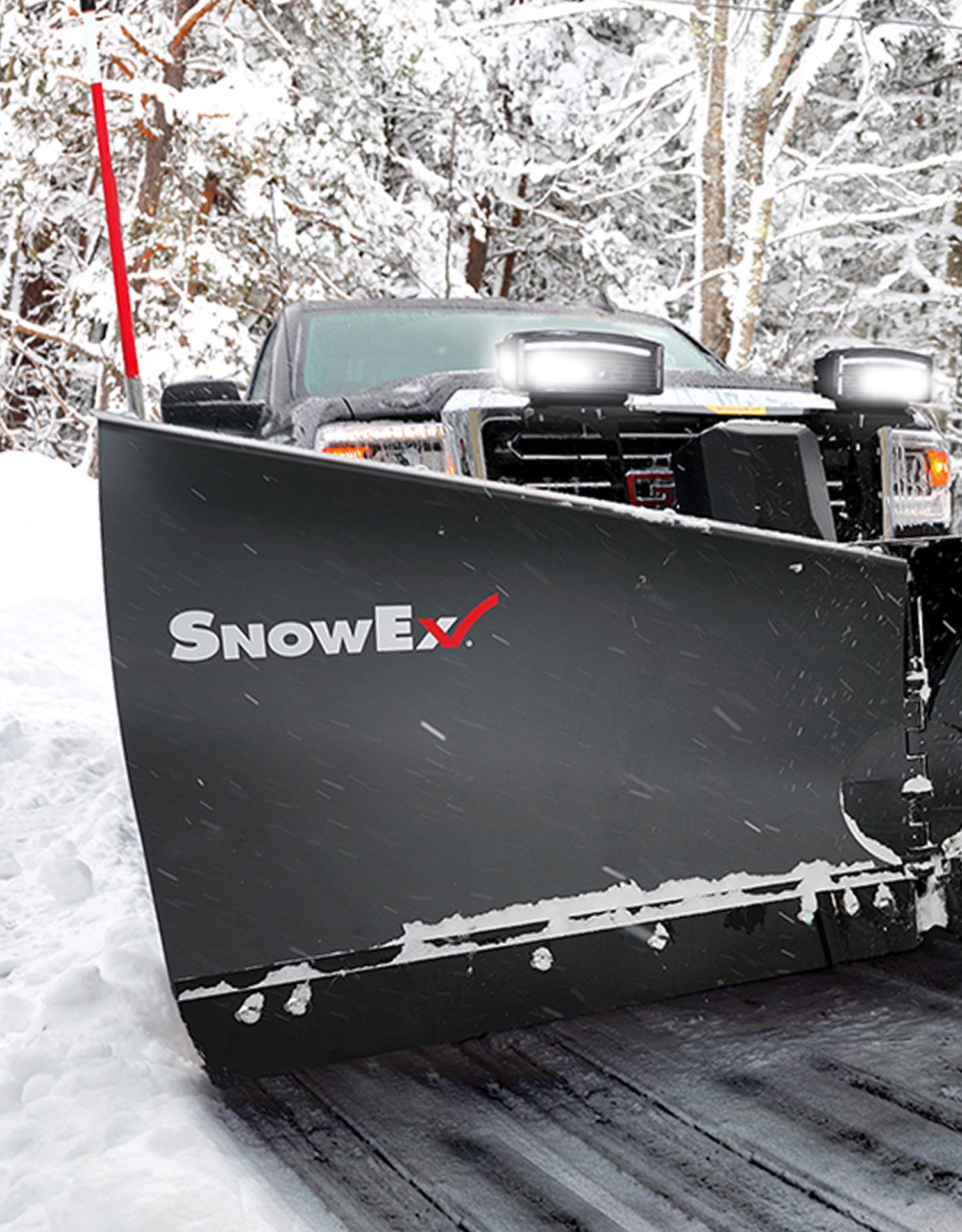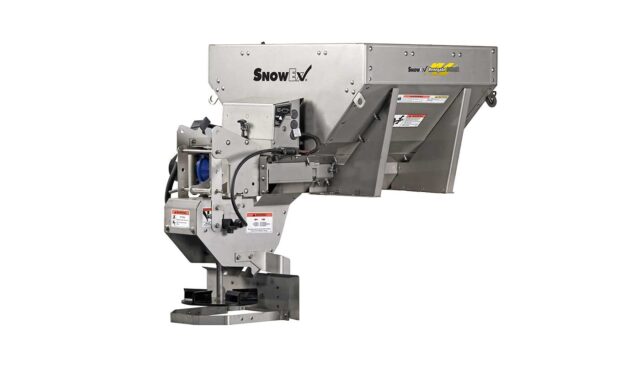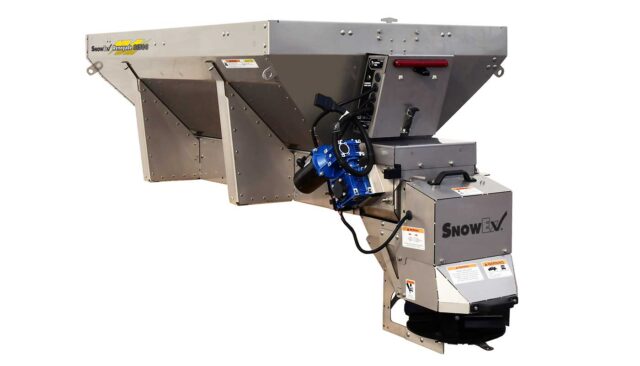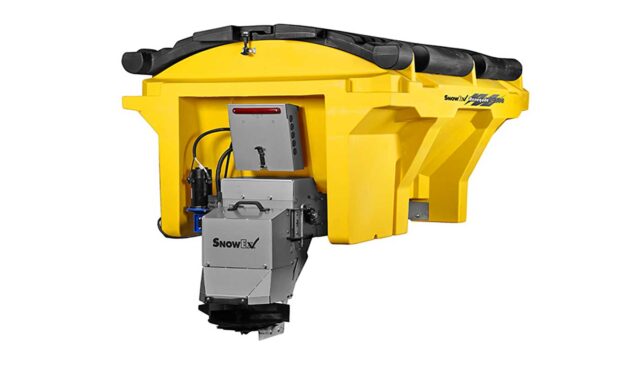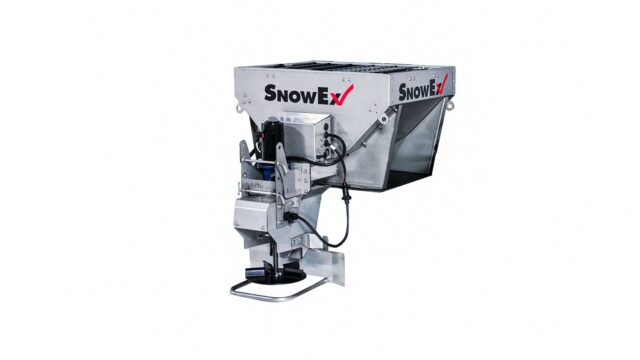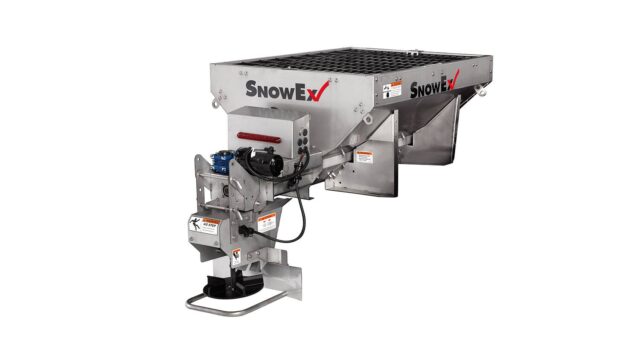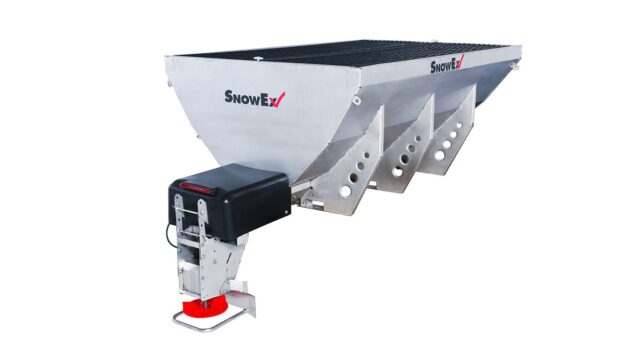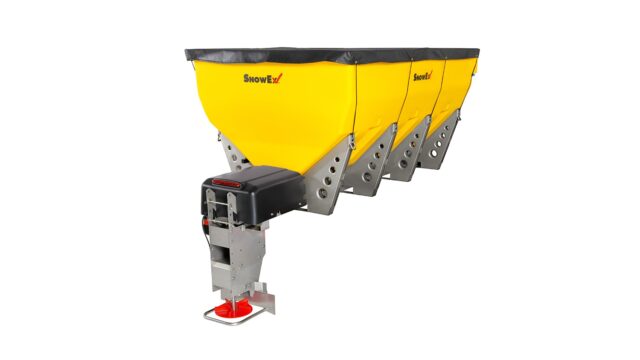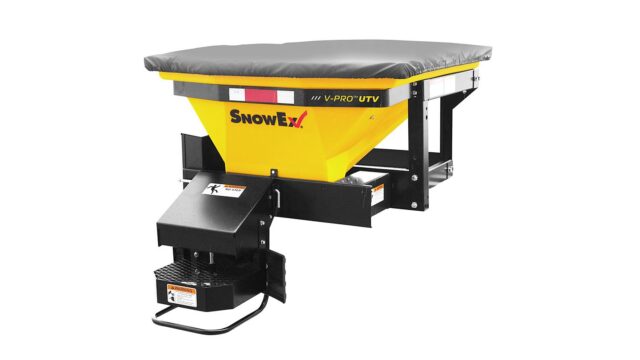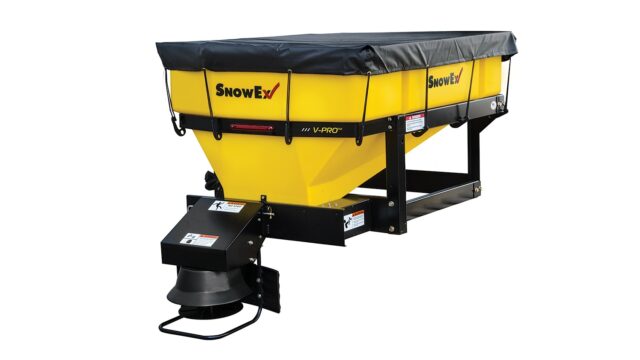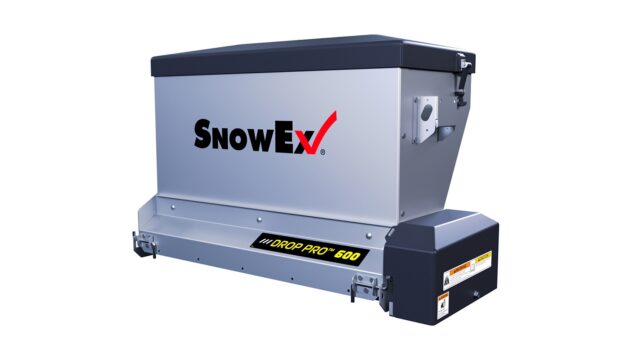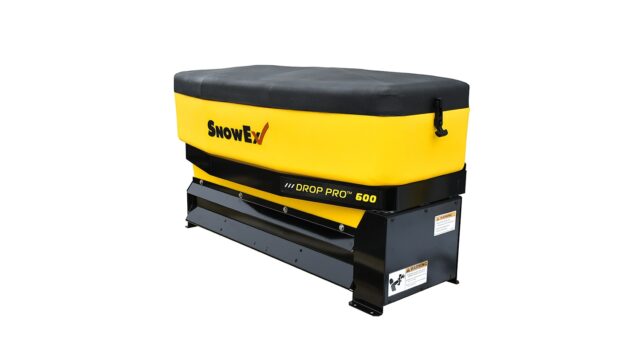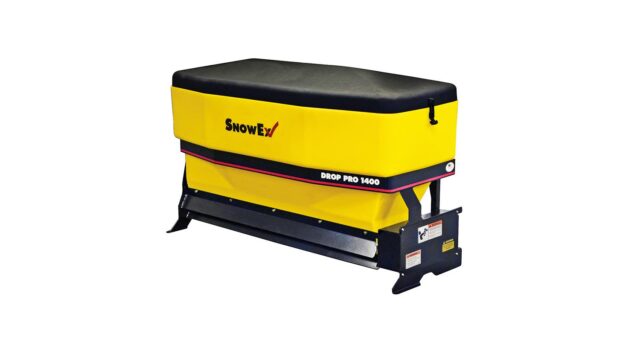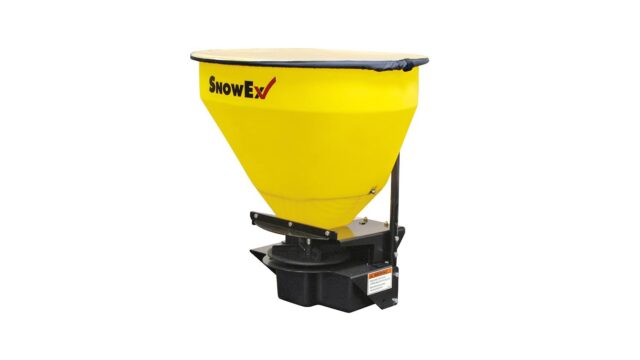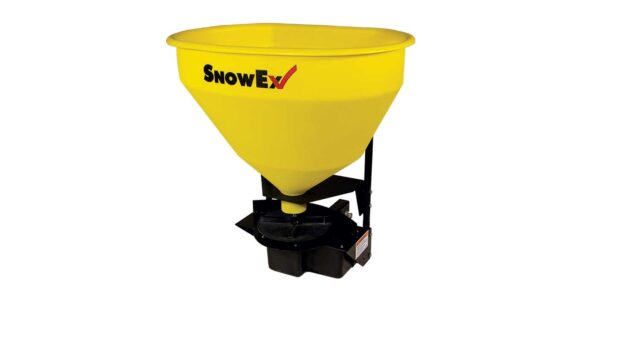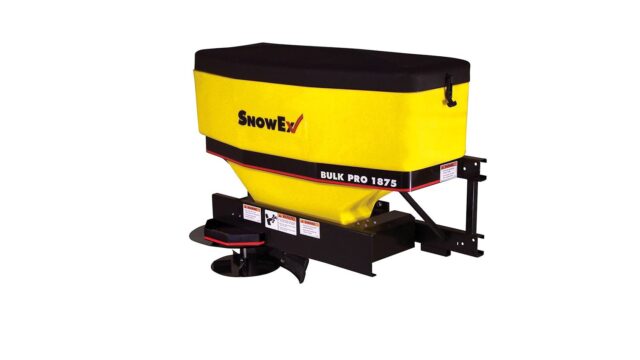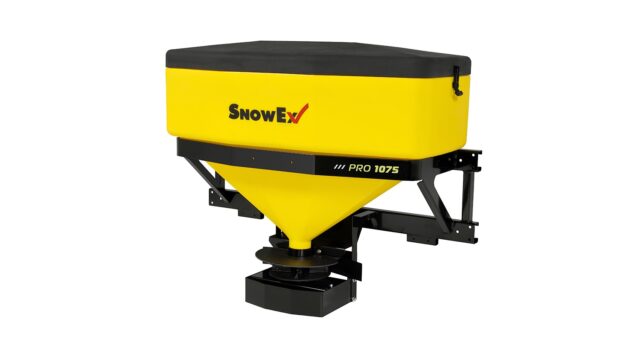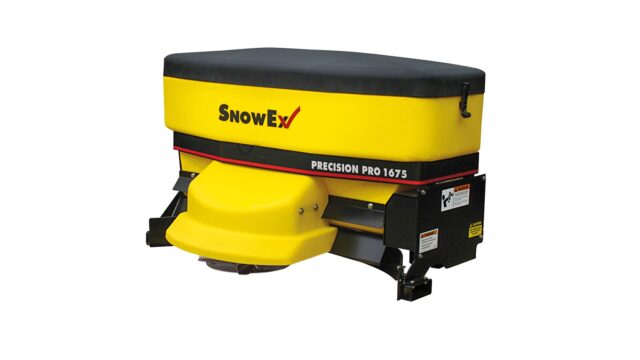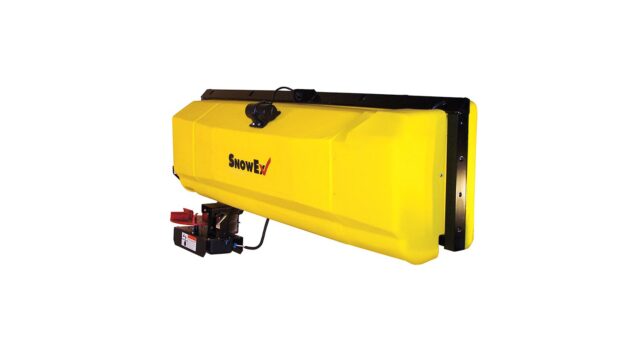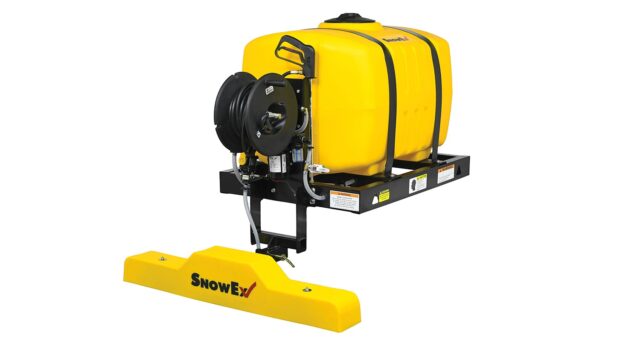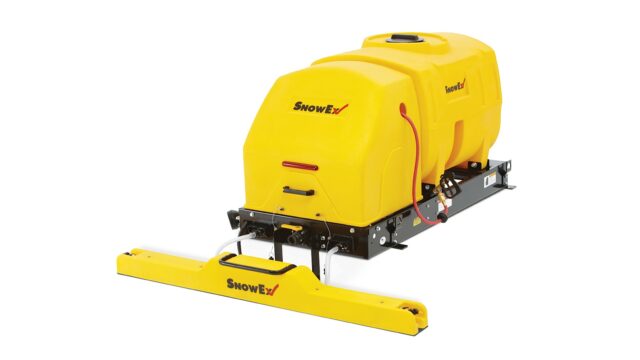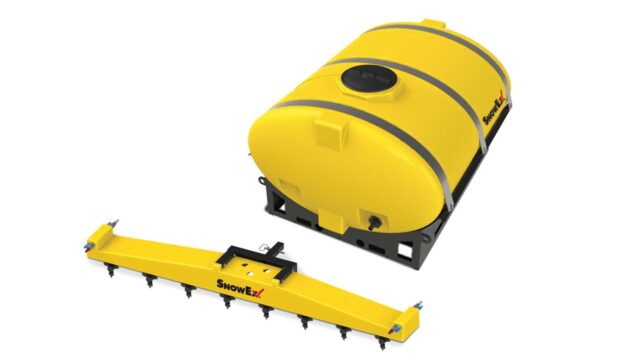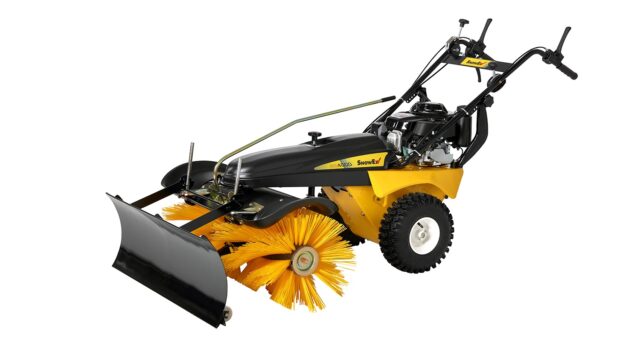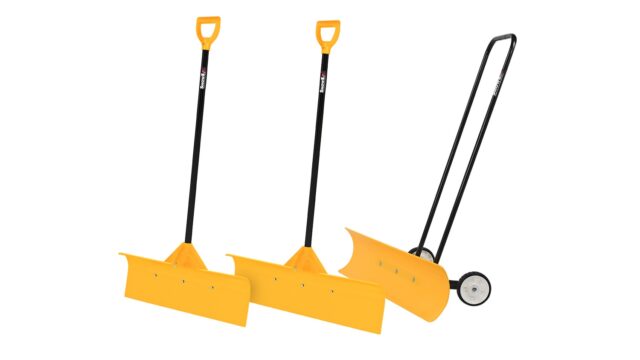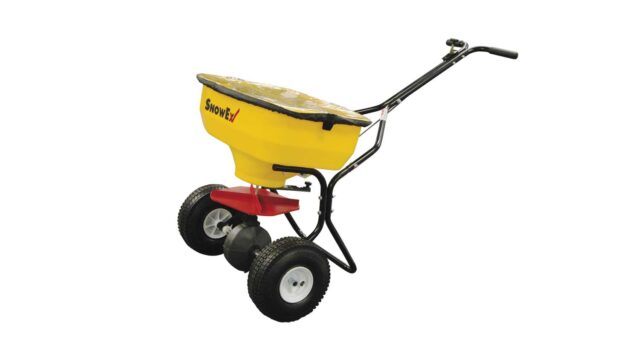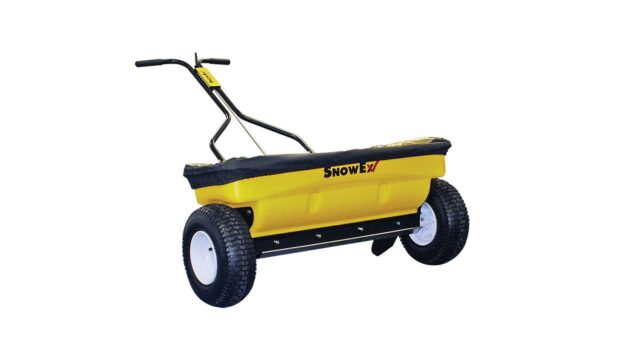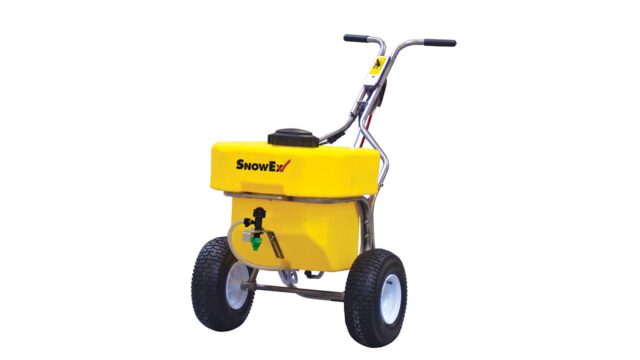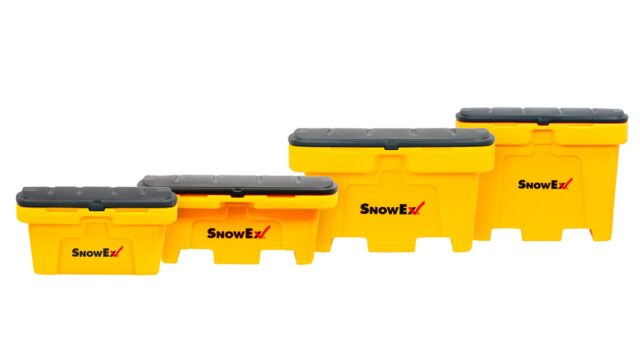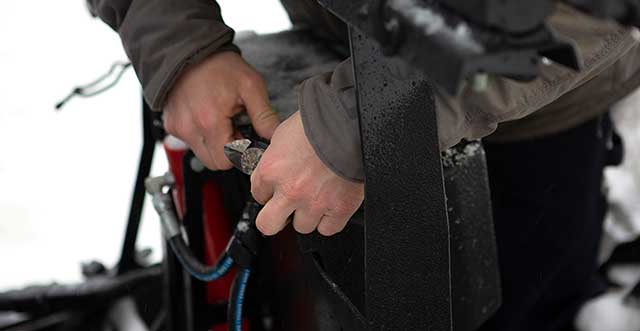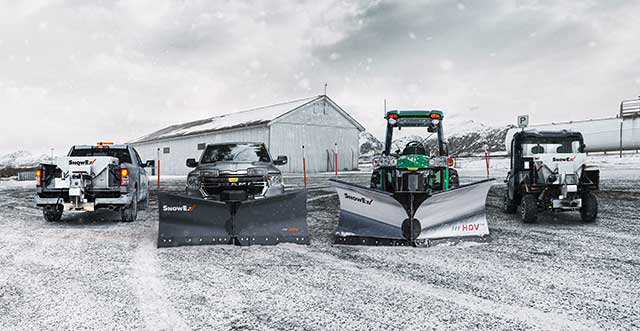The Rise of Poly Spreaders & Why They’re in Demand
Created March 13, 2020
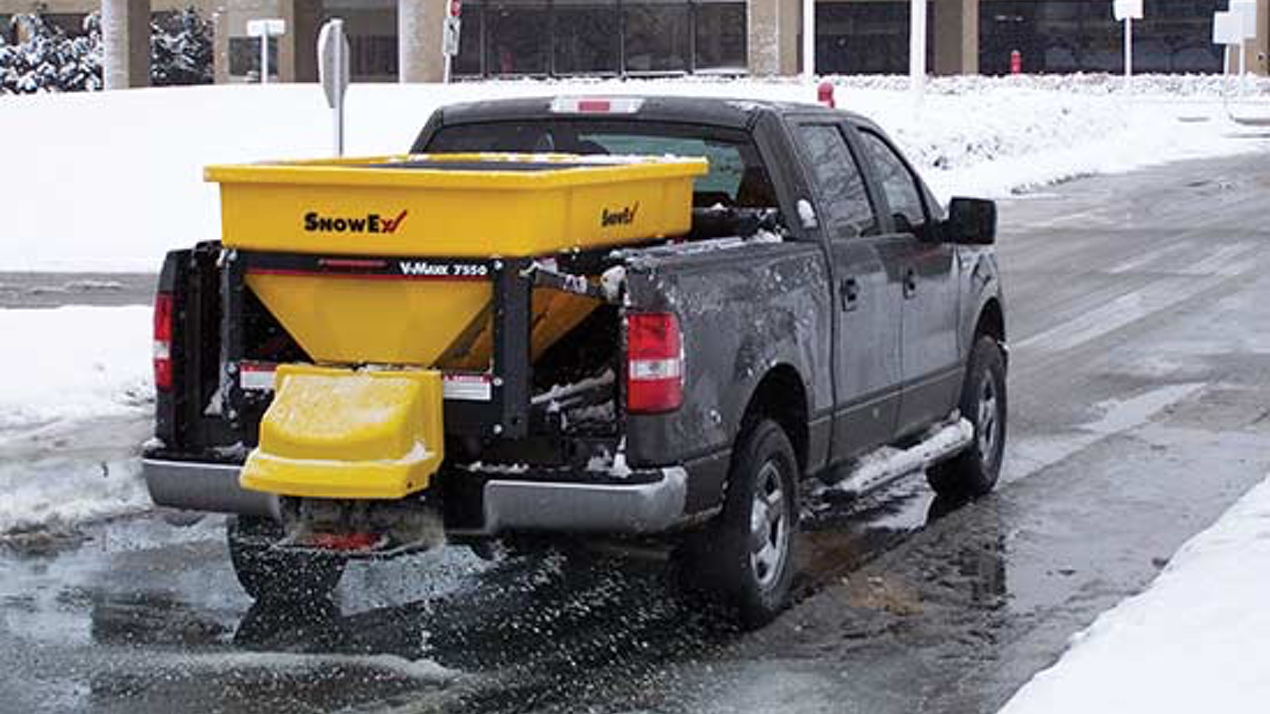
The introduction of polyethylene (poly) spreaders to the market in the early 1990s generated mixed reactions among snow and ice control professionals. On one side were thrilled contractors who had been waiting for a solution that would eliminate corrosion concerns and greatly reduce required spreader maintenance tasks. On the other end of the spectrum, skeptics wondered if a poly box could withstand the rigors and abuse of material spreading during a long winter season.
Manufacturers also had divided philosophies. While almost all acknowledged that the corrosion plague on steel boxes was a problem, many manufacturers were reluctant to make drastic changes to meet the market demand. Rather than spending money to add the appropriate resources to produce poly equipment, several manufacturers instead set their sights on stainless steel alternatives.
The winter maintenance landscape has changed. While once only a handful of manufacturers produced a poly product, the material has proven to offer so many known advantages that virtually every manufacturer now offers a bulk spreader with a hopper constructed of poly. Companies like SnowEx® that helped pioneer the initial movement actually produce a full line of poly spreaders.
More and more poly plow blades are also being introduced. The popularity and acceptance of the material can be seen in other markets as well. Manufacturers of air compressors, light compaction units and other machines have integrated poly into their products, often for the purpose of making the equipment more durable. Ironically, even contractors still using steel V-boxes in their pickups may be reaping the material’s benefits through the use of poly bed liners in their truck beds.
Poly spreaders themselves have also evolved and improved, delivering even better performance on the job. When looking at the rising costs associated with market alternatives, it becomes even easier to understand how and why poly has become so pervasive.
Poly Durability
Many manufacturers originally dismissed the notion of adding poly options to their product offering, given the large financial investment required to hire engineers and set up new machining processes to produce the equipment. That initial reluctance to spend has given way to customer demands, as most manufacturers have begun producing poly spreaders in some form.
Customer demands have been fueled by the realization that poly can provide added benefits — without sacrificing strength and durability. Most poly spreaders are made through a rotational molding process, where heated liquid poly is rotated or spun, eliminating any air pockets that could leave behind weak spots. Because the constant rotation allows the material to be distributed evenly as it hardens throughout the mold, the result is a spreader with strong, consistent wall thicknesses.
The elimination of potential weak spots offers a clear distinction between poly and steel boxes. Steel spreaders are naturally weakest in their welded corners, while poly spreaders are a one-piece product with no weak points when properly manufactured. While welds are susceptible to breakage over time, the same vulnerability doesn’t apply to a well-made poly spreader. The issue of pure material strength may be up for debate among contractors, but there is simply no denying that an actual working product constructed of poly is more durable than a steel alternative.
Less Weight, More Profit
While there may be certain levels of subjectivity at play in durability comparisons, no such ambiguity exists when comparing the weight of poly and steel V-boxes. Poly-constructed spreaders weigh less than steel units, a fact that provides several benefits for winter maintenance professionals who take advantage of such equipment.
Weight is a big factor when it comes to loading a pickup truck, especially when taking into account the gross vehicle weight (GVW). If a poly V-box weighing 200 to 500 pounds less than a stainless steel V-box is used, a contractor will stay that much further away from exceeding the GVW limit on the truck. This, in turn, means that the contractor could carry at least 200 pounds more bulk material at the start of the day.
With a lighter box and a larger material load, a contractor can stay out on the job longer with one load. This means he can service more accounts before going back to reload. Obviously more clients means more money; therefore, the ability to carry more material translates directly into increased profits.
Furthermore, since each individual load is larger, the total number of loads is fewer, resulting in reduced drive time back and forth to get reloaded. Basically, more time is spent putting out material and less time is spent chasing it down. Carrying more weight and making more trips also increases fuel consumption, which given today’s rising gas prices, can substantially eat into profit margins. Servicing accounts more quickly also contributes to reduced liability for everyone involved.
The lighter weight design helps when it comes to handling the equipment as well. A typical poly spreader can be installed by two people, whereas steel options either require additional personnel or mechanical assistance. Some steel box manufacturers have tried to bridge the gap in equipment weight over the years. But since the only way to reduce the weight of a steel box is to make it thinner, these “lightweight steel” products often fail to meet the demands of durability-conscious contractors.
Lighter material weight also allows for more vehicle flexibility. With steel units, contractors tend to limit the number of times the spreader is installed or removed from the vehicle. The unit is typically installed once at the beginning of the season and removed and stored at the end of the season. This essentially dedicates the truck to spreading — eliminating the pickup’s payload capabilities. Poly-constructed V-boxes do not require the same dedication. Because the units can be installed and removed by two people, it wouldn’t be unusual to use the same vehicle for spreading in the morning and then hauling extra materials or equipment in the afternoon.
Controlling Corrosion, Minimizing Maintenance
While many other benefits have also been realized, there is no questioning that the primary reason for the introduction of poly-built, winter maintenance products was to greatly reduce or eliminate the problem of corrosion. Historically, steel-built options had developed rust and corrosion within the first season, since all it takes is a slight chip or scratch in the paint to directly expose the metal to water, air and salt.
The same vulnerability holds true for today’s standard steel boxes, leaving contractors with no recourse but to pour time and money into daily, weekly and seasonal maintenance. In fact, it’s not uncommon for contractors to spend more than $1,000 worth of time and materials simply to prepare a steel unit for use at the start of a season. Poly users, on the other hand, often are able to plug in the spreader and start working with no preliminary maintenance — and no additional money spent.
While poly’s introduction to the market had solved most equipment maintenance issues, even manufacturers themselves had originally neglected the corrosion concern with regard to the spreader’s motor, which remained exposed to the elements. Since that time, a number of poly manufacturers have taken the extra step of enclosing and sealing the motor, thus protecting the battery and terminal contacts, and making the poly spreader a truly corrosion-resistant unit.
Of course, poly isn’t the only game in town when it comes to avoiding corrosion. Stainless steel boxes offer the same benefit. But that’s not to say that stainless steel spreaders don’t share other maintenance hassles with their standard steel counterparts.
The number of parts alone associated with either steel option, versus a poly spreader, forces contractors to evaluate how much maintenance they’re willing to perform. A poly spreader’s functionality is very simple — a motor drives an auger and a spinner. Steel and stainless steel spreaders typically incorporate an engine, sprockets, chains, belts and pulleys. In other words, it’s a more complicated piece of machinery that increases the odds that repair needs will arise.
Another advantage provided by poly-constructed equipment is the non-stick characteristics of the material itself. Since poly is an oil-based product, it naturally keeps the inside of the hopper slick, which promotes a free flow of materials and helps prevent buildup and clogging. When used in steel units, sand and salt will actually bind to the sides of the hopper. This results in slower material flow and a lot of work for the operator, who may actually need a pressure washer to effectively remove material from the hopper’s sides.
The Price is Finally Right
It’s long been the case that the maintenance costs for steel boxes have far exceeded those for poly spreaders. When coupled with the profitable benefits of its lighter weight, poly unquestionably carried a lower total cost of ownership than steel alternatives, despite the higher initial purchase price.
Today, the cost-benefit pendulum seems to have swung completely in the direction of poly. Corrosion concerns have greatly diminished the presence of standard steel spreaders on the market. And now in some cases, poly manufacturers are actually able to match the prices of comparable steel boxes. By virtually eliminating the price gap, poly spreaders would now seem to provide every conceivable advantage over steel boxes.
Furthermore, the price of stainless steel at the retail level has jumped dramatically. Certain grades of stainless steel more than doubled in price over the past year to more than three dollars a pound, and more increases are anticipated. This has caused a corresponding spike in the cost of stainless steel spreaders — which had already been significantly more expensive than poly boxes to begin with.
Something For Everyone
For contractors conscious of cost, clients mindful of safety, and municipalities concerned with both, poly spreaders are filling everyone’s needs. And with poly’s durability, lighter weight and lack of maintenance requirements providing a multitude of benefits, it’s not difficult to see why so many steel manufacturers have opted to make the investment to produce a poly product line.
While poly may have begun as an upstart idea for a better winter maintenance product, it has developed into the predominant force in the industry. This sentiment does not simply represent the opinion of one or two manufacturers, but instead illustrates the power of market demand. Manufacturers that want to stay in business must listen to their customers — and customers have had plenty of good things to say about poly.
